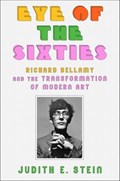“[An] evocative portrait” of one of the most influential and enigmatic American art dealers of the 1960s (Barbara Rose, The New York Times).
In 1959, Richard Bellamy was a witty, poetry-loving beatnik on the fringe of the New York art world. By 1965, he was representing Mark di Suvero, had been the first to show Andy Warhol’s pop art, and had introduced the new genre of installation art. An eccentric art dealer and founder of the Green Gallery on Fifty-Seventh Street, Bellamy helped discover many of the innovative successors to the abstract expressionists, including Claes Oldenburg, James Rosenquist, Donald Judd, Dan Flavin, Walter de Maria, and many others. But, uninterested in anything more than showing the artists he loved, Bellamy slowly slid into obscurity while fellow dealers such as Leo Castelli and Sidney Janis capitalized on the stars he helped find.
Based on decades of research and on hundreds of interviews with Bellamy’s artists, friends, colleagues, and lovers, Judith E. Stein’s Eye of the Sixties rescues the legacy of the elusive art dealer and tells the story of a counterculture that became the mainstream. Ranging from the Beat orbits of Provincetown to white-glove events like Guggenheim’s opening gala, from Norman Mailer’s parties to historic downtown Happenings, Richard Bellamy’s story is a remarkable window on the art of the twentieth century and the making of a generation’s aesthetic.
“[Judith E. Stein’s] engrossing, impressively researched, consistently readable, and often entertaining tale restores a crucial figure to his rightful place in the annals of postwar American art.” —Lilly Wei, Art in America
“By using [Belamy’s] unlikely ascent as a prism, Ms. Stein brings to vibrant life a corner of the culture that was as outrageous as it was visually revolutionary.” —Ann Landi, The Wall Street Journal
“A man of shrewd and impeccable taste, Bellamy’s role in promoting the often misunderstood art of abstract expressionism, pop, and minimalism was profound. This is an endearing and illuminating work of biography. A shadowy figure of the 1960s art world is gloriously revealed.” —Kirkus Reviews

